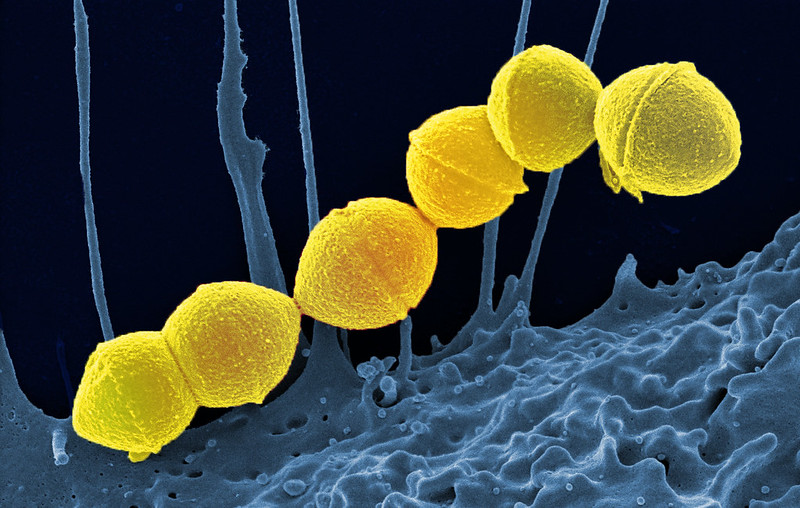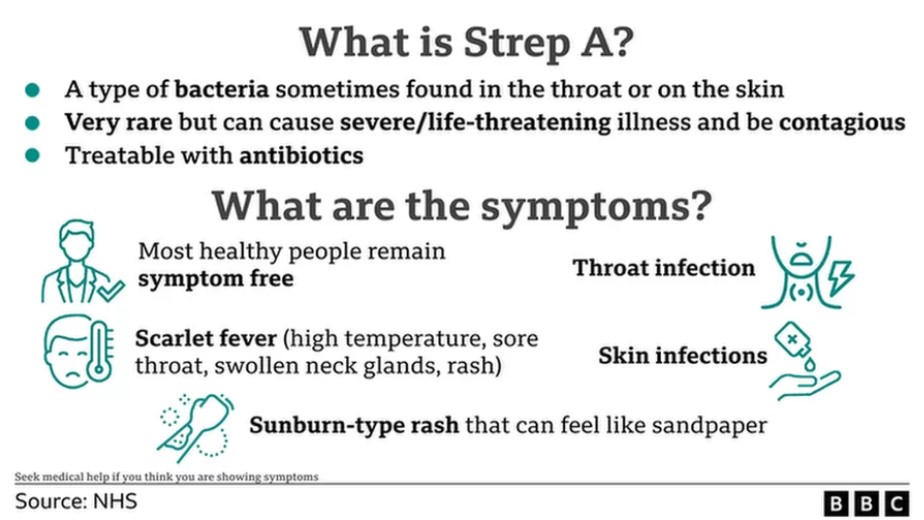Strep A infections have been very much in the news this month following the tragic deaths of 15 young children since September. BBC Wales News reports over 18,000 calls to NHS Wales 111 over the second weekend of December, many from parents concerned about Strep A infections. But what is a Strep A infection and what is the link between sore throats, Scarlet fever and iGAS?

‘Strep’ is short for Streptococcus, a type of bacteria. Group A Streptococci are bacteria commonly found on the skin or throat. Referred to as GAS, these bacteria can cause infections of the throat and skin, but they are usually mild and can be treated with antibiotics.
Scarlet fever is also caused by a GAS infection. It develops after symptoms of a sore throat or skin infection and is accompanied by a distinctive, rough-feeling pinkish rash. There have been several outbreaks in recent years but is generally much less common now. It is very infectious, spread by airborne droplets or through touch from people with the infection (or who have the bacteria present in their body but don’t have any symptoms). It commonly affects young children but people of any age can catch it. Most cases clear up without treatment but antibiotics can be given if necessary.

So that’s Strep A, GAS and Scarlet fever. What is iGAS? This refers to the situation where a GAS infection spreads from somewhere it is commonly found, like the throat, to elsewhere in the body where it is not usually found, like the blood, muscles or lungs. The infection has invaded other parts of the body, so this serious development is referred to an invasive Group A Streptococcal disease – iGAS. iGAS is rare but serious and seeking prompt medical attention is important. The disease can be treated and the majority of children recover.
In response to the surge in calls to NHS Wales 111, Public Health Wales has issued a traffic-light symptom checker to help parents decide whether they need to seek further advice. PHW has also announced that they will be reporting weekly every Tuesday about iGAS on their website.
Maggie Kirk

